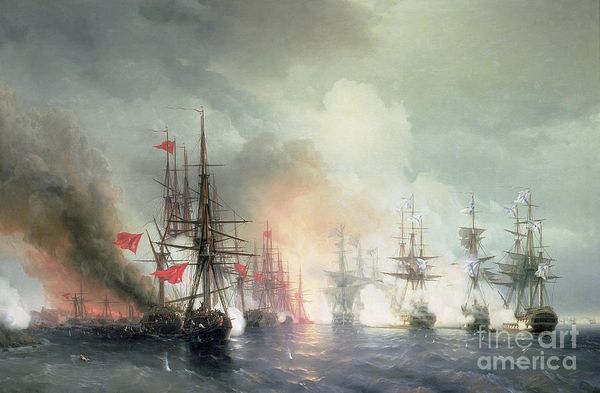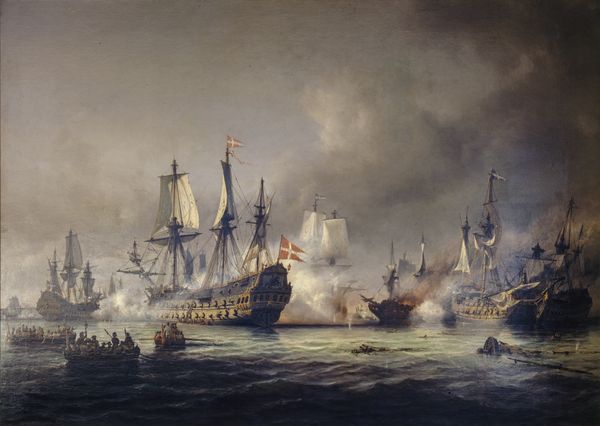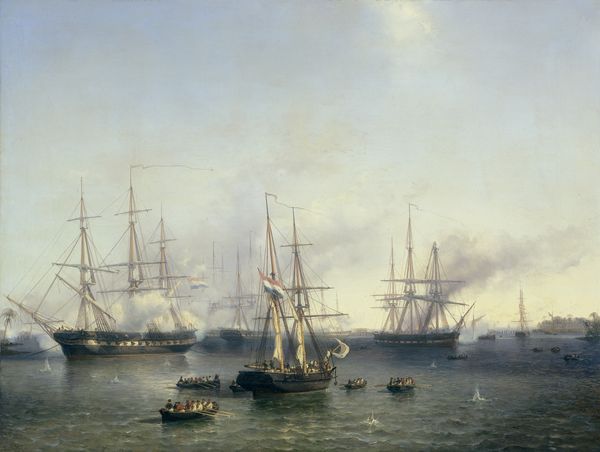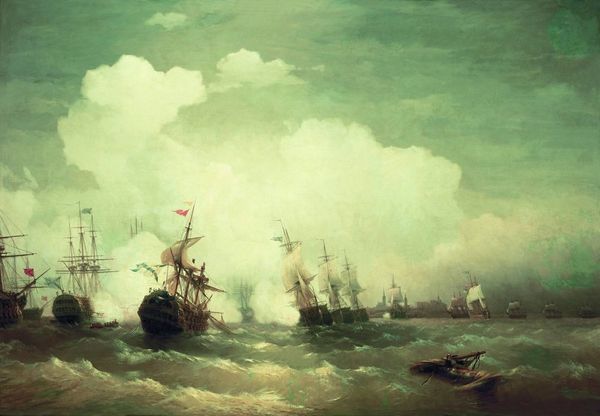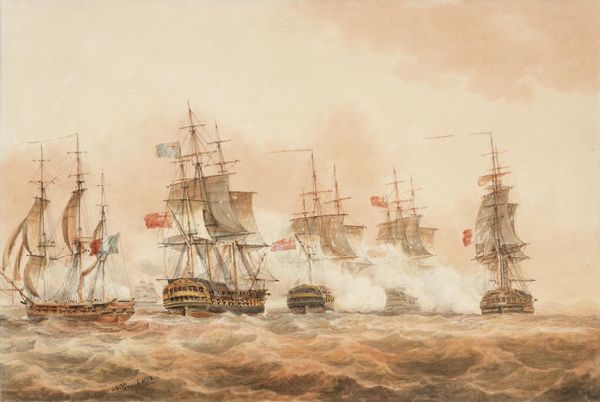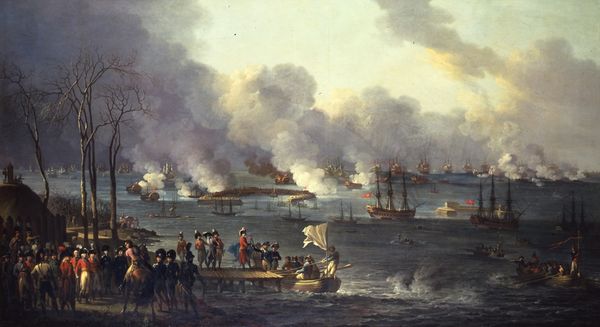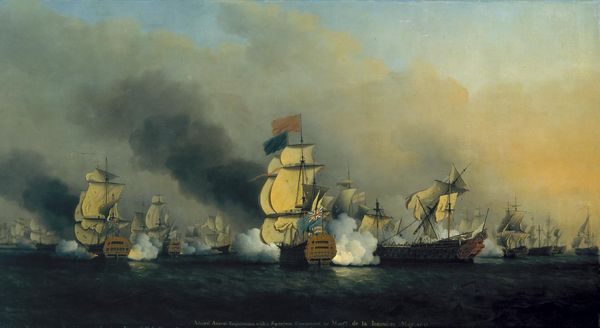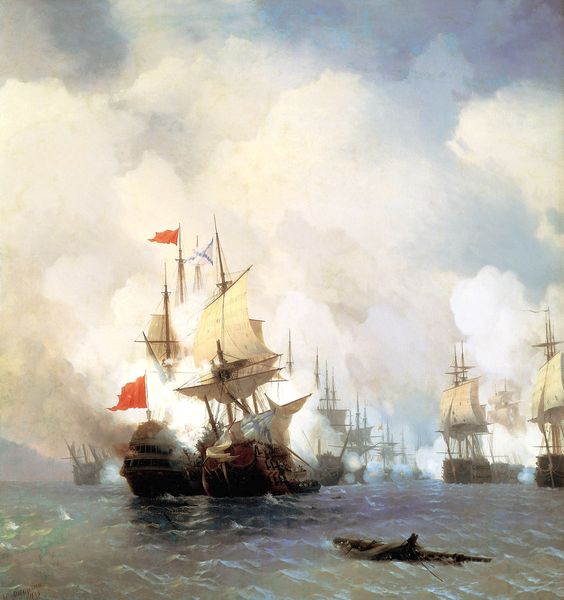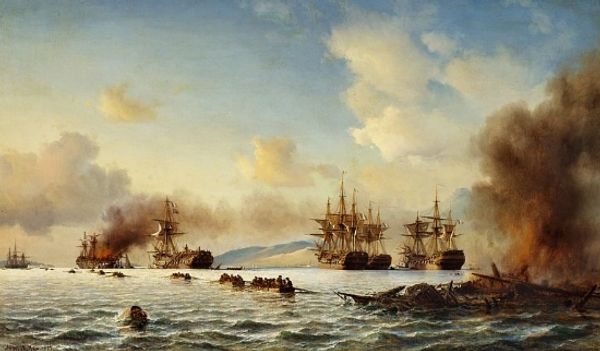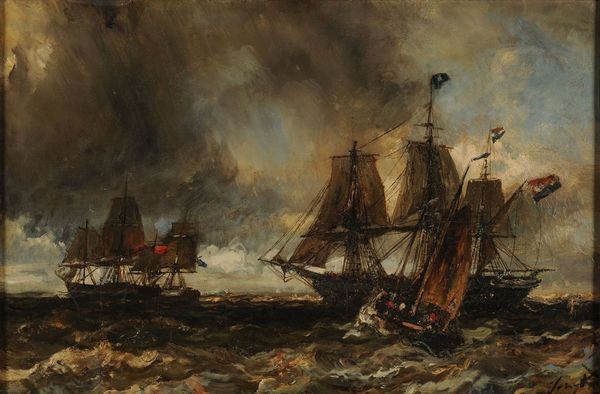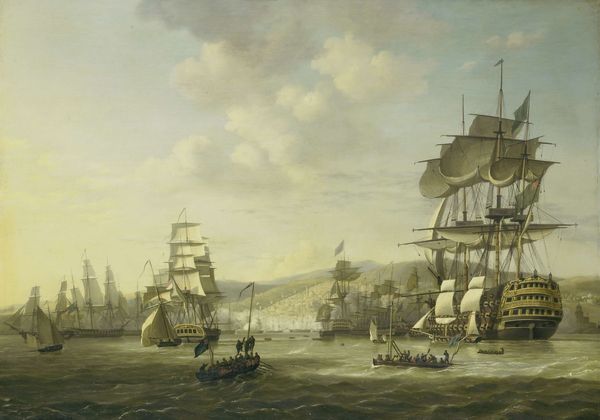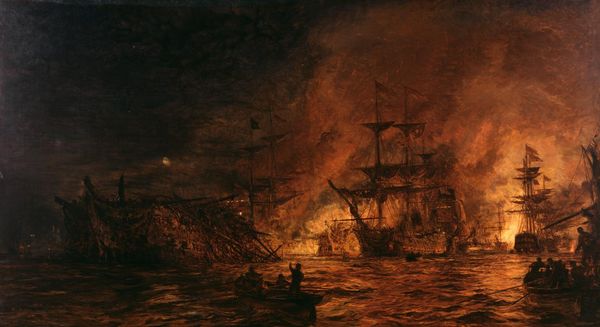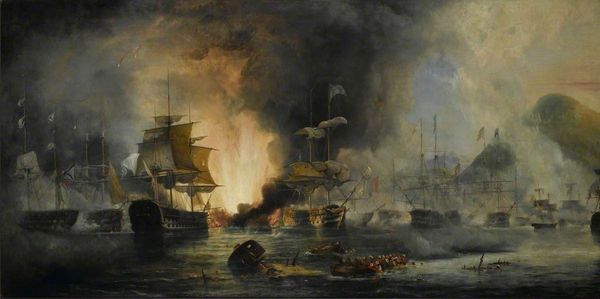
painting, oil-paint
#
boat
#
ship
#
painting
#
oil-paint
#
war
#
landscape
#
impressionist landscape
#
romanticism
#
water
#
history-painting
#
sea
Dimensions: 172 x 234 cm
Copyright: Public domain
Curator: This is "The Battle of Navarino" by Ivan Konstantinovich Aivazovsky, painted in 1846. Editor: What strikes me immediately is the sheer chaos rendered in oil. Look at how Aivazovsky has depicted smoke and fire, almost consuming those wooden ships. It feels like the very materiality of the vessels is dissolving before our eyes. Curator: Indeed. This painting commemorates a pivotal naval engagement in the Greek War of Independence. The Allied forces, including the British, French, and Russians, decisively defeated the Ottoman fleet here in 1827. It was a crucial event in securing Greek independence and reflected broader shifts in European power dynamics and imperial ambitions. Editor: Considering Aivazovsky's marine art background, I wonder about the technical challenges he faced representing such a complex scene. The depiction of the water is rough, not pretty at all. Was it really the right call to work with this specific kind of oil-paint at the time? Curator: Absolutely. He masterfully uses light and shadow to create drama, almost romanticizing the brutality of naval combat. There’s a deliberate emphasis on the spectacle and glory of the Allied victory and a de-emphasis on the Ottoman perspective. Think about where the painting would have been displayed and how those politics are completely ingrained. Editor: It's fascinating how Aivazovsky treats the aftermath. The wrecked ships almost blend in with the raging water and sky, a visual comment on how fleeting victory and conquest can be. It is a testament to his grasp of materiality, and to how ephemeral structures become when exposed to natural or antagonistic forces. Curator: It is a potent combination of historical documentation and Romantic ideals. A reminder of the complex interplay between art, history, and national identity in 19th-century Europe. Editor: And a grim reminder of how human ambition translates into the physical world, through the destruction of beautiful handmade vessels. Curator: A powerful, if ambivalent, statement brought forth with materiality, labor and historical import.
Comments
No comments
Be the first to comment and join the conversation on the ultimate creative platform.
